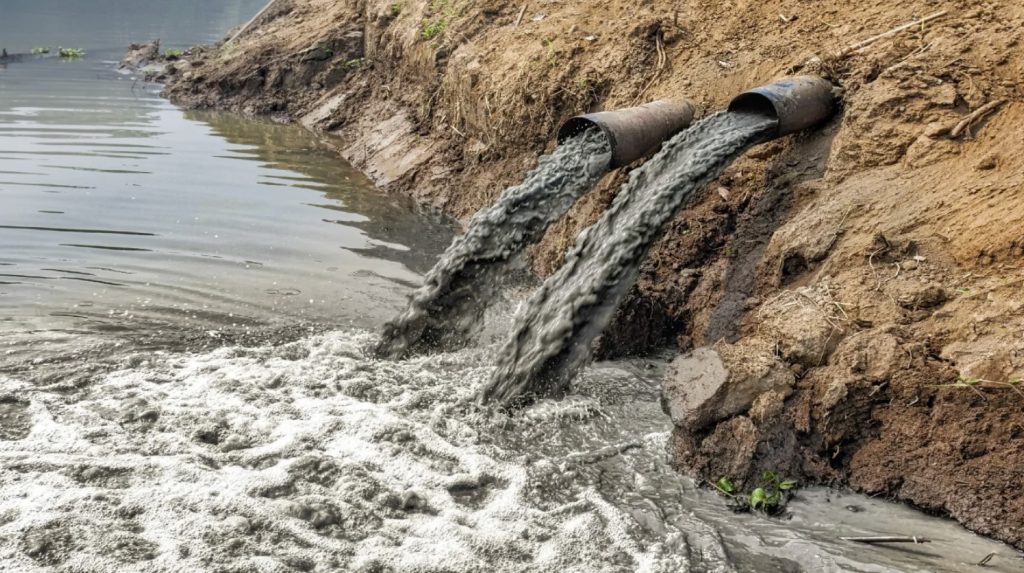The US is not just facing a major drought. New data show that about half of US water ‘too polluted’ for swimming, fishing or drinking.

The Clean Water Act, passed into law 50 years ago, has fallen well short of its goals, a new analysis finds. Nearly half of the rivers and streams across the U.S. are considered too polluted to meet quality standards for swimming, recreation, aquatic life, fish consumption or as drinking water sources.
The Environmental Integrity Project (EIP), a nonpartisan nonprofit formed by former Environmental Protection Agency (EPA) attorneys, published a report that found alarming results of water quality tests in all 50 states. More than 700,000 miles of waterways, about 51 percent of assessed river and stream miles, are impaired by pollution. That’s in addition to another 55 percent of lake acres and 26 percent of estuary miles.
DRINK CLEAN WATER USING THE BEST HOME WATER FILTER AROUND…
The report defines “impaired” as waters that are too polluted to meet standards for swimming and recreation, aquatic life, fish consumption or as drinking water sources.
Some states have done better than others. The report found Indiana tops the list of states with the dirtiest waterways, with 24,395 total miles of rivers and streams considered impaired for swimming and recreation. Second is Oregon and third is South Carolina.
Florida ranks first in the U.S. for total acres of lakes classified as impaired for swimming and aquatic life and second for total lake acres listed as impaired for any use.
California also ranks first when it comes to the most river and stream miles listed as impaired for drinking water and third for fish consumption.
EIP argues all of this data still does not provide the full extent of the nation’s water pollution because all states monitor their waterways differently – with no universal guidelines provided by the EPA.
That’s on top of limited funding and budget cuts, causing state environmental agencies to be understaffed and unable to test all their waters within the mandated time periods.
Across the U.S., EIP projects 73 percent of rivers and stream miles have not been assessed during the most recent cycle. The same goes for 49 percent of lake acres and 24 percent of bay areas.
The results come despite federal regulations mandated by the Clean Water Act of 1972, which has directed more than $1 trillion in investments into wastewater treatment plants and has driven substantial improvements in water quality.
PROTECT YOUR HOME AND CAR WITH THE BEST LIGHTNING AND EMP PROTECTION AVAILABLE…
However, the act, “has not achieved what it promised,” according to EIP. It outlined multiple ways the EPA could strengthen enforcement and modernize pollution solutions.
Updating regulations is the first step, as EIP argued that the EPA has not updated its standards for highly polluting industries, like chemical manufacturing, since the 1970s, “back when ‘modern’ technology meant computers with floppy disks.”
That’s despite a mandate within the Clean Water Act that requires the EPA to re-examine water pollution standards for industries every five years to keep pace with improving pollution-control technology.
Agriculture runoff is another area that needs to be addressed, as EIP believes that is by far one of the largest sources of impairments in waterways across the U.S.
“Factory-style animal production has become an industry with a massive waste disposal problem and should be regulated like other large industries,” said EIP’s report.
That’s in reference to pollution from agriculture, which can allow excess fertilizer and manure to wash into streams and rivers that leads to algal blooms. That can quickly turn toxic, with the National Oceanic and Atmospheric Administration describing the process as algae that grows out of control, causing human illness or even death in extreme cases.
Consistency is another area in need of attention, as currently the EPA lets states decide the issues surrounding the assessment of waterways, including interpreting water quality criteria, how frequently data is collected and the method of analysis and classification.
Essentially, there are no universal guidelines for waterway impairment designations for all 50 states as a means for gauging unhealthy levels of key pollutants like nitrogen.
DRINK CLEAN WATER USING THE BEST HOME WATER FILTER AROUND…
The Clean Water Act did make significant strides in cleaning up the country’s waterways by the 1990s and 2000s, with one 2000 EPA report estimating an additional 16,507 miles of rivers and streams were made swimmable because of the act. An additional 24,713 miles had also been made fishable.
Notably, EIP’s report said those improvements were “due not only to increased funding and stronger laws, but to the dedicated work of tens of thousands of workers inside and outside the government who dedicated their lives to making America’s waters cleaner.”
President Biden’s bipartisan infrastructure bill does include funding for water pollution control efforts, with the EPA announcing earlier this month it intended to work with state, local and Tribal partners to implement $43 billion in water infrastructure funding. [The Hill]
StrangeSounds.org has been banned from ADS NETWORKS! CLICK HERE TO DONATE AND SUPPORT ME, MY WORK AND MY WEBSITE!
NOW PREPARE FOR THE NEXT NATURAL DISASTER AND EMERGENCY:
PROTECT YOUR HOME AND CAR WITH THE BEST LIGHTNING AND EMP PROTECTION AVAILABLE…
DRINK CLEAN WATER USING THE BEST HOME WATER FILTER AROUND…
You should really subscribe to QFiles. You will get very interesting information about strange events around the world.













The biggest polluters have always been the government. The blanket statement that half the water is “‘too polluted’ for swimming, fishing or drinking.” has no detail about what the pollution is. It is in the EPA’s interest to self perpetuate itself. No one wants pollution, but everyone’s definition is different. I know the water is much much cleaner than it was when I was swimming in rivers that had raw city sewage dumped in it. Somehow we survived and things are better today – everywhere.
Even using home water filters (like Brita) I still can taste the “off” taste of C&C water. Refrigerator filtered water taste a lot better. Almost like the kind you buy at the store. But not the “Brita” filtered one with the pitcher.
I can tell you exactly why.
When it rains in large cities and the deep tunnels get overwhelmed, the local government dumps millions of gallons of raw sewage into the waterways.
This makes its way into rivers, streams, the water table.
Just about every problem on this planet is because of government.
Has been for a long time.
20 years ago when my son was in HS they wanted parents to sign a waiver for “water
Born illnesses” to enter a boat race on the Arkansas river in wichita ks.
It certainly hasnt gotten any less polluted.